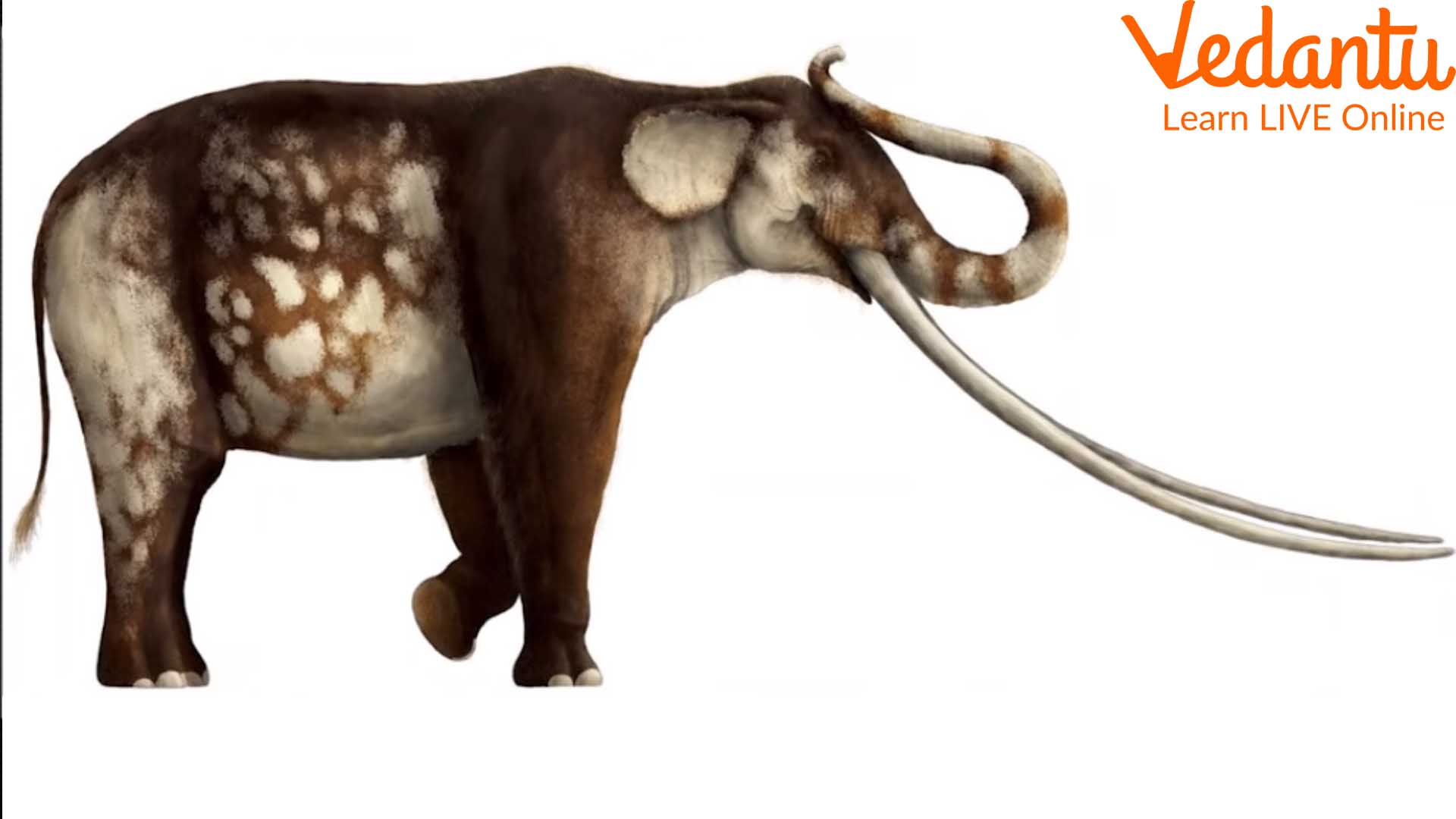Straight Tusked Elephant Fossils Found Dated Back to 100000 Years
Can you imagine a daycare for elephants where a bunch of baby elephants, adolescents and some older female elephants existed? Well, you don’t have to imagine the situation because something like that has already been discovered. Some fossilized footprints were discovered 100000 years ago on a beach in Spain. The footprints actually suggested that there was a nursery for elephants back then. The area from which the footprints were discovered was called the Matalascanas Trampled Surface.
Also, some other information was discovered about the footprints that suggested that the elephant in question was a straight-tusked elephant. The name of this particular elephant species was Palaeoloxodon antiquus.

Straight Tusked Elephant
You might think the Asian straight-tusked elephant is a bizarre-sounding thing, right? After all, we have all been taught in Biology classes that elephants have rounded tusks. The tusks are basically the large incisor tooth of elephants, and they tend to have a particular type of shape after going through different stages of evolution. However, it is apparent that the straight-tusked elephant was a better, stronger, and much larger ancestor of the elephants we have today.
So, how exactly were these footprints discovered and what else was found about the period to which these elephants belonged? Read on ahead to find out more.
What Do These Elephant Footprints Actually Mean?
According to the data found about the footprints, the scientists and researchers actually found them on a particular beach in Spain. Most of the footprints that were discovered were oval-shaped and pretty smooth. These also showed that the elephants were actually newborns, juveniles, and calves. However, some other footprints were pretty large when compared to the others. This corresponded to the presence of some older female elephants. It could be that the mothers and grandmothers of the elephants were there as well.
The number of larger footprints was just a few, and it indicated the presence of some older elephants for sure. However, this goes on to show that the Asian straight-tusked elephant footprints were from a particular nursery where male presence was very limited. Now you must be wondering how the scientists and archaeologists actually got such detailed information about the elephants and that too from mere footprints that were fossilized, right? Well, a lot of research went into such a deduction.
The team that was responsible for researching the fossils used the length of the fossilized footprint to estimate the weight and height of the elephants properly. The biologists used this method to measure modern-day elephants as well. Apart from that, it becomes a lot easier to accurately estimate the body mass and age of the animal by analysing its footprints and their shape and size.
Coming back to this particular deduction about the elephant nursery, the scientists actually found varying ranges of footprint shapes and sizes. The measurement was between 4-21 inches, and hence, they developed the knowledge that these elephants belonged to different ages, gender, and size. This is what they found out about the straight-tusked elephants.
During the discovery, the scientists found the footprints of 33 individual elephants. Most of the footprints were actually from the babies. 14 elephants were less than 2 years old. That is surely a large number of cute baby elephants, right?
How Were the Footprints Discovered?
We have mentioned earlier that scientists managed to discover the footprints of elephants with straight tusks on the beaches of Spain. Actually, it turns out that when these elephants existed, these locations were actually freshwater banks. It is known to us that elephants tend to form their herds near the banks of a river so that they can have easy access to water. However, owing to the changes that occurred on earth due to evolution, there is no doubt that these freshwater banks evolved into beaches.
In fact, scientists also found out that this particular beach in Spain was actually covered in about 1.5 meters of sand in the past. So many storm surges all over the world had managed to unearth the habitat of the straight-tusked elephants in the Coastal Portugal region.
It can be said that the whole ordeal was a pretty lucky event considering that the researchers actually found these footprints of pretty good quality. They are only formed in rare climatic conditions when the animals used to walk on soft mud. After that, the sunlight must have baked them totally try, and these tracks were ultimately formed. Then they were covered with sediments for a long time so that they could be preserved. Now with this discovery, a lot more facts, such as the diet of straight-tusked elephants and much more, can be discovered.
Looking Back Into the Life at that Time
Now that you have an understanding of what these footprints mean and how these straight-tusked elephants inhabited the bank, let us have a look at the culture and the living conditions that they had. After glancing into the way that these elephants used to live, it can be said that the conditions were matriarchal. Hence, everything was centred around the mothers and other older female elephants who used to take care of both adolescents and baby elephants.
The male elephants were fewer in number, and scientists actually have to say that these male elephants would only be around for social purposes and mating. Another major deduction was made about the elephant with 4 tusks, and it was about prehistoric life which was coincidental during the Pliocene Epoch. This showed that these elephants would wander on earth alongside the Neanderthals. An interesting fact about the Neanderthals is that they used to hunt down elephants for food and other purposes.
Conclusion
Considering that the fossils of the straight-tusked elephant footprints have just been discovered. It can be said without a doubt that there is more room for further discoveries. With better research, we shall be able to find out more about their food, lifestyle, and much more.







